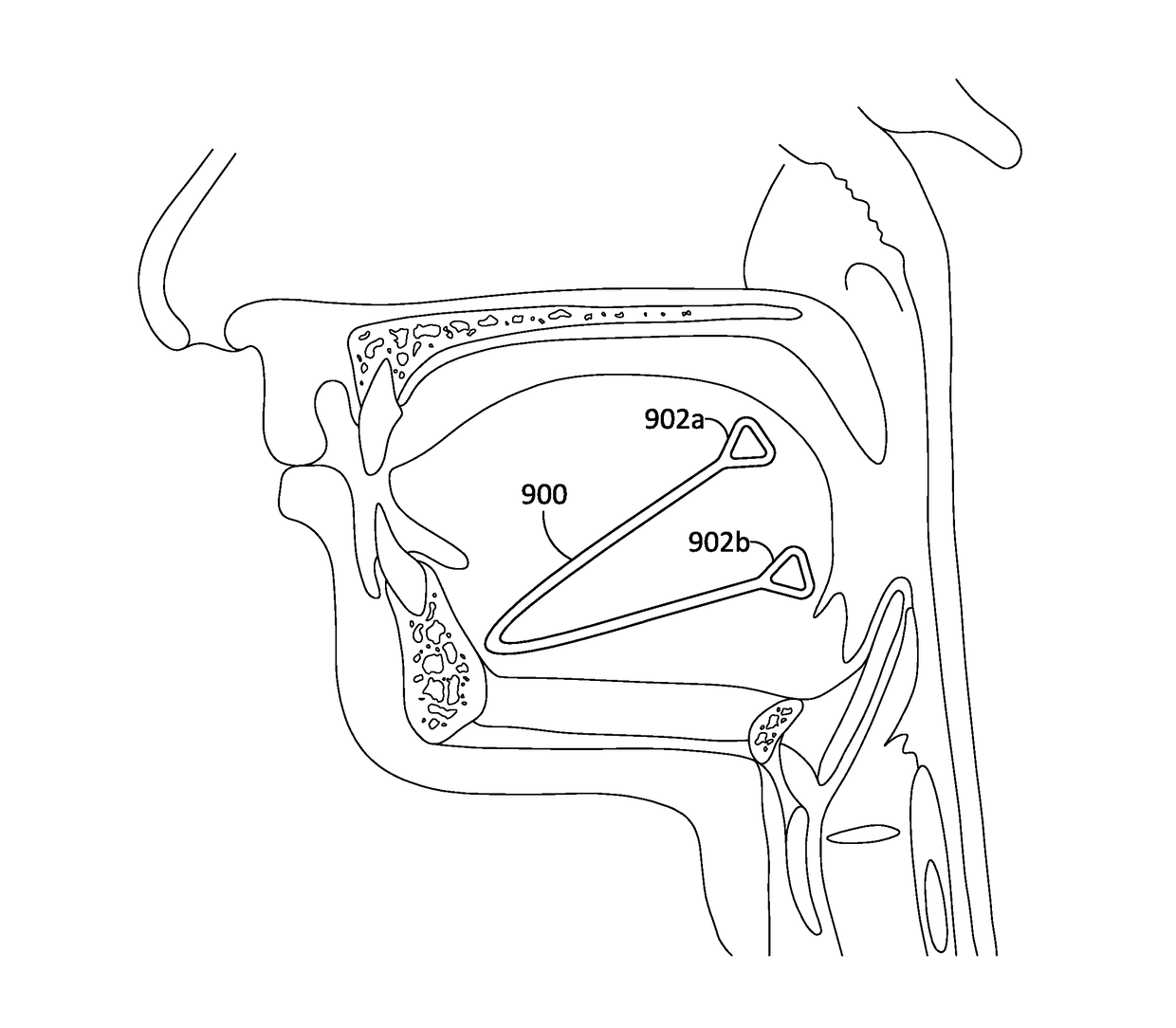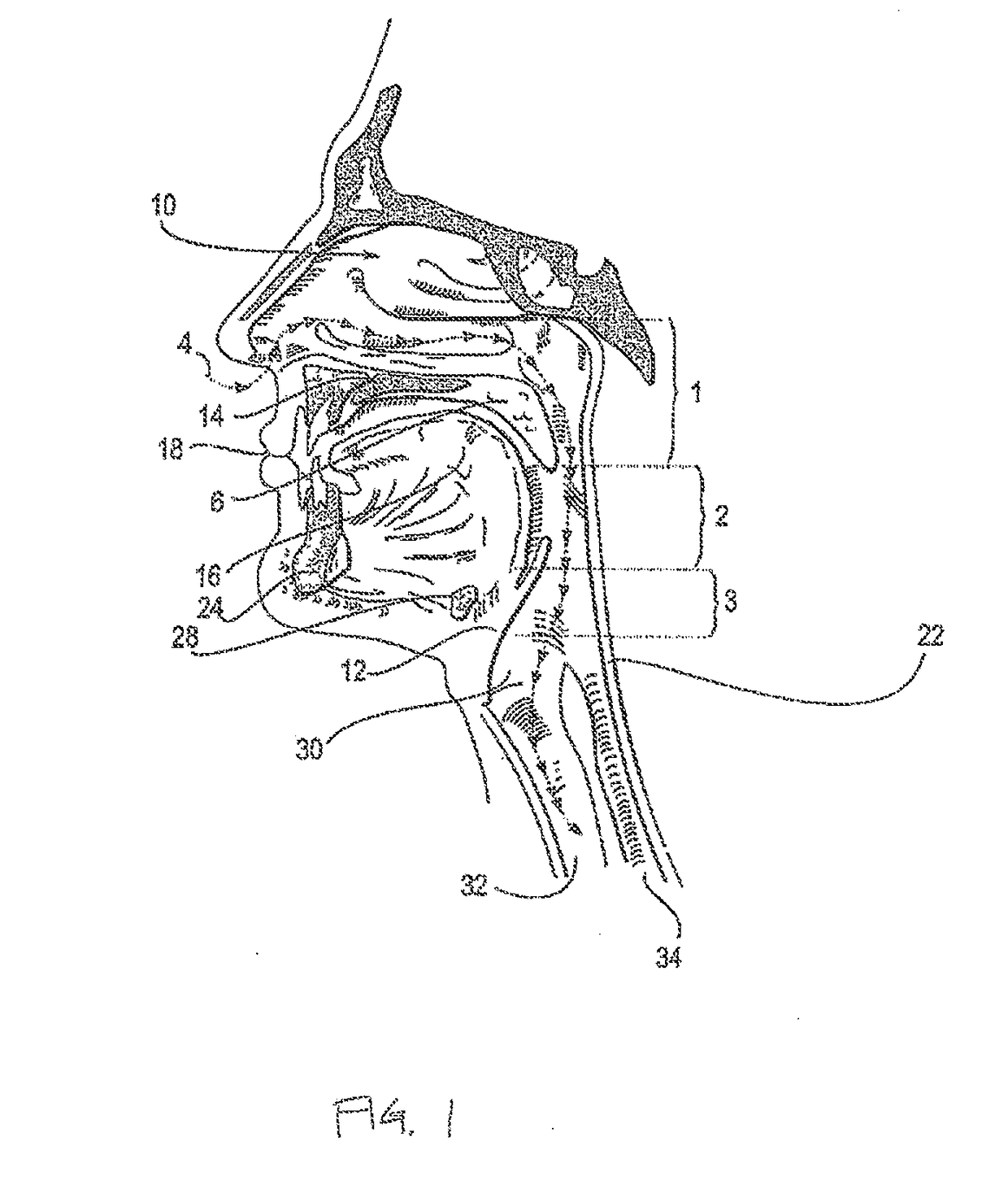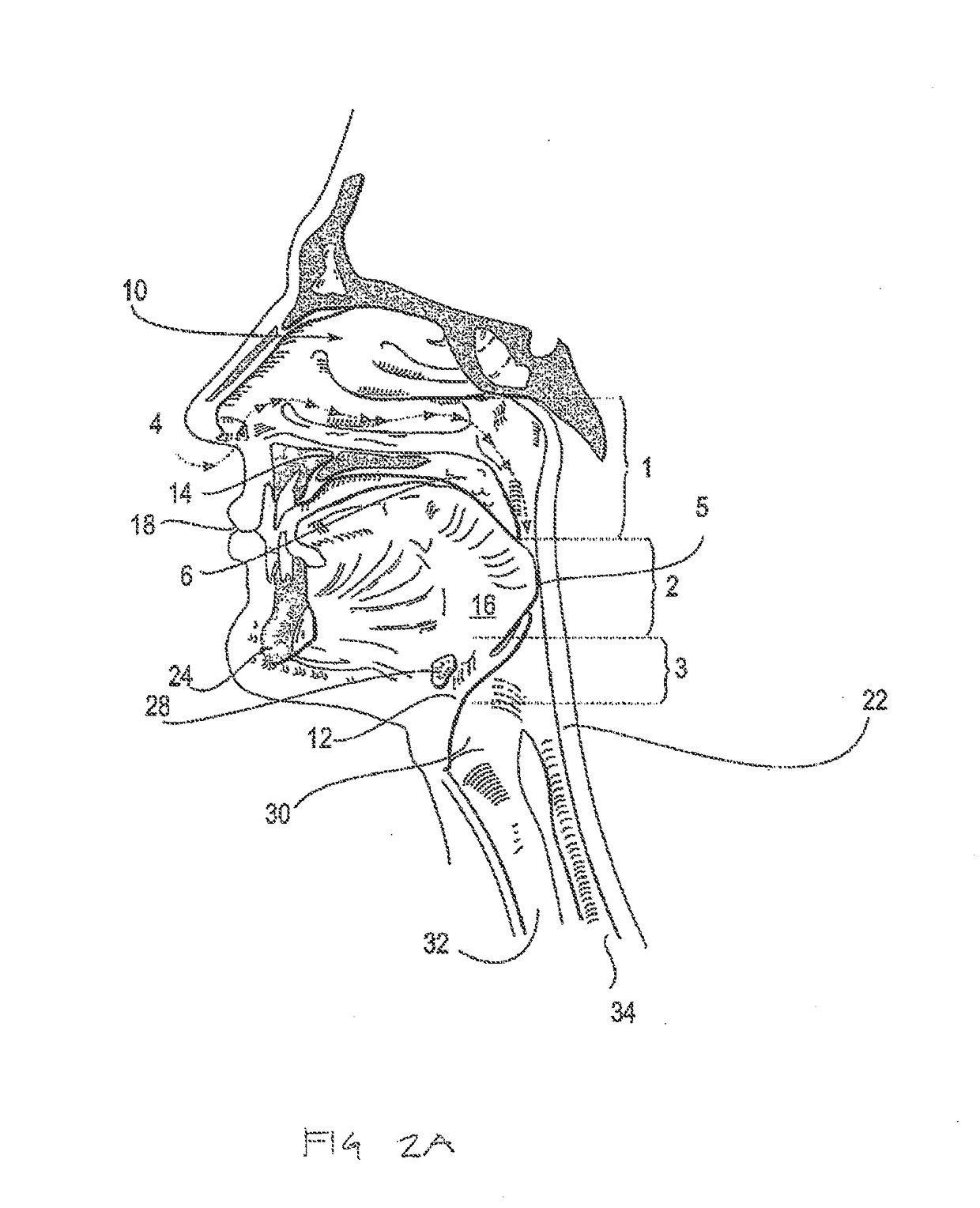Systems and methods for treatment of sleep apnea
a technology for sleep apnea and sleep apnea, which is applied in the field of methods and devices for the treatment of obstructive sleep apnea, can solve the problems of reducing unobstructed airway, and obstructive collapse, so as to reduce the tendency to collapse during sleep, reduce the frequency of apneic events, and prevent obstructive collaps
- Summary
- Abstract
- Description
- Claims
- Application Information
AI Technical Summary
Benefits of technology
Problems solved by technology
Method used
Image
Examples
example 1
ontraction Accelerated Testing
[0405]An in vitro test system was developed to demonstrate the fatigue behavior of the restricting coils and simulate the expected motion after implantation. While not wishing to be limited to any theory, it is thought that the characteristic motions of the coiled implant when implanted are initially multiplanar bending. While some stretching of the device may occur, contraction is substantially prevented until the supporting coils degrade.
[0406]In order to evaluate the relative performance of types of coils, sets of implants with different durometer silicone cores and with coils that were either fused or open-ended within segments were rested. Coils with diameters of 0.009″ or 0.013″ were tested in 0.1M saline at 37° C. in a 20 L bath. The coils were made to oscillate by fixing one end and placing the body of the implant in a moving stream such that bending occurred at an approximate frequency of 2 Hz with a randomly oriented 15 degree to 30 degree ben...
example 2
[0409]The effect of fusing implant coils together to prevent the coils from prematurely unwinding on the implant contraction rate was further tested using a canine animal model. Comparable implant systems having resilient, long term implants initially held in expanded shapes by coiled bioerodable implant material with (FIGS. 118 C-D) and without (FIGS. 118 A-B) fused coils were placed on both left and right sides of animals' tongues and soft palates and the bioerodable material bioeroded to allow the resilient, long term implants to foreshorten. The implant lengths were measured as a function of length of time since implantation. Noting that the time scales are different, as seen by the more gradually downward sloping curves going from the initial implant lengths (at time=0) to the equilibrium (foreshortened) implant lengths in the results shown with the fused coils placed in the right and left sides of the tongue (“Right tongue” and “Left tongue”, respectively) as shown FIGS. 118 C...
PUM
 Login to View More
Login to View More Abstract
Description
Claims
Application Information
 Login to View More
Login to View More - R&D
- Intellectual Property
- Life Sciences
- Materials
- Tech Scout
- Unparalleled Data Quality
- Higher Quality Content
- 60% Fewer Hallucinations
Browse by: Latest US Patents, China's latest patents, Technical Efficacy Thesaurus, Application Domain, Technology Topic, Popular Technical Reports.
© 2025 PatSnap. All rights reserved.Legal|Privacy policy|Modern Slavery Act Transparency Statement|Sitemap|About US| Contact US: help@patsnap.com



